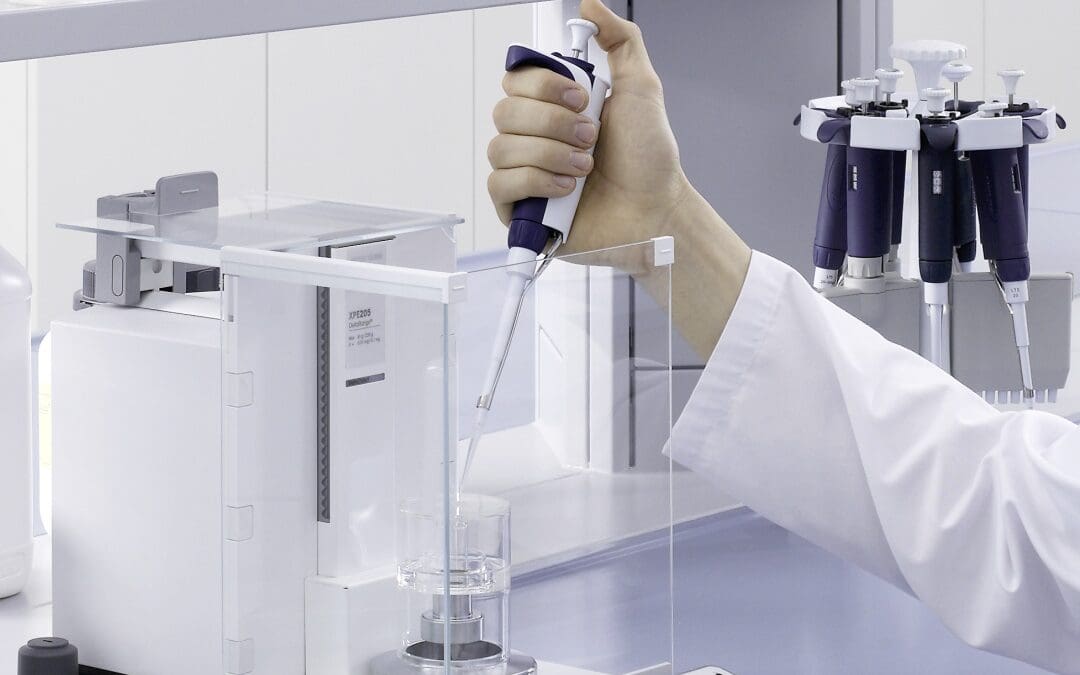Definition of Calibration
The calibration of a pipette is the process where the difference between the dispensed volume and the selected volume is determined. The pipette is adjusted according to the ‘difference’ to ensure that the dispensed volume is within the specifications.1
Even pipettes that are used for an identical repeated practice and are handled with the utmost care must be calibrated at regular intervals to ensure accuracy. The performance of the most well-kept pipette will naturally deteriorate with continued use, but periodic calibration will provide greater reliability and quality results.
General Factors That Determine Calibration Frequency
- Type of liquid dispensed.
- Level of experience and skill of the technician.
- Level of accuracy and precision required to perform the task. Pipettes that are used for tasks that have strict accuracy parameters require more frequent calibration.
- Organisational requirements. Pharmaceutical companies and clinical laboratories have stringent protocols when compared to school laboratories who generally have more relaxed standards.
What Happens When the Pipette is NOT Calibrated.
To understand the importance of pipette calibration, it makes sense to understand what happens if the pipette is not calibrated.
- Pipettes that are not calibrated at regular intervals produce questionable measurements, and the integrity of any results and data will be compromised. Resources and funding are often scarce for laboratories, and untrustworthy results can have a significant impact on the success of the company.
- Pipettes are high-precision laboratory instruments that have multiple components. A number of things can happen when a pipette is not calibrated regularly, such as:
○ Mechanical failures, e.g. leaky seals.
○ Damage to the nose of the shaft.
○ Contamination of the piston.
○ Corrosion of the piston.
- The pipette will deliver results that are unreliable.
- Unreliable results could lead to misdiagnosis, delayed treatment, and in some cases, death.
The pipette is a laboratory instrument that produces crucial data. The implications of a malfunctioning instrument, delivering inaccurate volumes of liquids, could be fatal. Pipette calibration is a vital component of Good Laboratory Practice (GLP), and according to ISO 8655, should be undertaken every 12 months, and every six to three months for instruments that are used on a daily basis. Standard operating procedures (SOP’s) that are clearly documented, and accountabilities that are clearly communicated, will ensure that there are no misunderstandings regarding calibration protocols. It pays to remember that while technicians are highly skilled, test results will be unreliable if sub-standard equipment is used. Companies have a responsibility to ensure that pipettes are calibrated on a regular basis if the reputation and integrity of the company are to be maintained.
References
Pipette Calibration & Maintenance | Thermo Fisher Scientific – UK. (2019). Retrieved 17 October 2019, from https://www.thermofisher.com/au/en/home/life-science/lab-plasticware-supplies/lab-plasticware-supplies-learning-center/lab-plasticware-supplies-resource-library/fundamentals-of-pipetting/pipette-maintenance-service/pipette-calibration-maintenance.html

